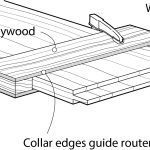We may receive a commission when you use our affiliate links. However, this does not impact our recommendations.
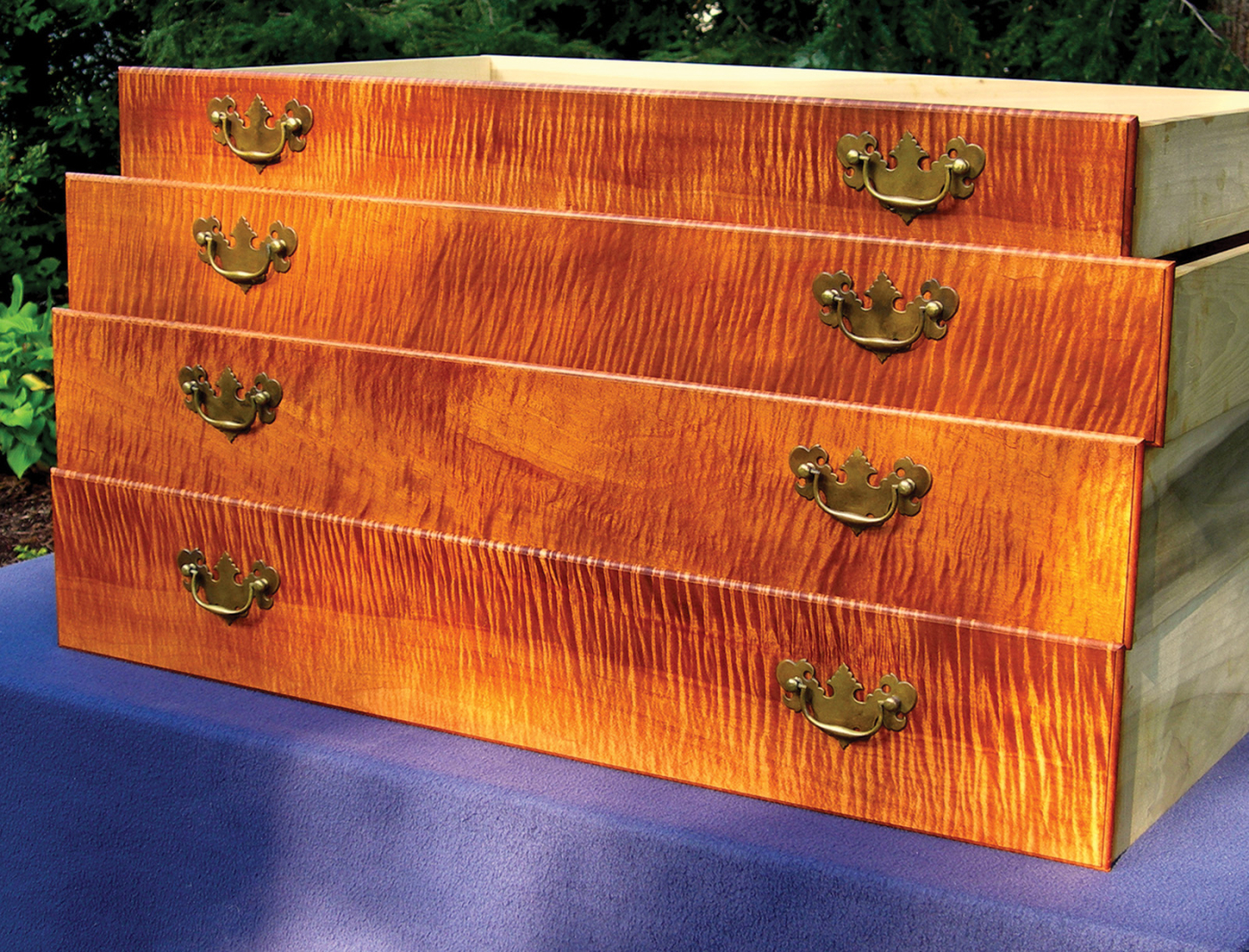
Shimmering drawers. Figured-maple drawer fronts paint a dramatic visual picture – even outside of their carcase.
The right orientation adds shimmer and pop to your work.
The barn loft was hot and dusty – and especially so after digging through piles of rough lumber for wide cherry boards at the bottom of the stack. We took a break outside for some fresh air and sat on a pile of firewood. I didn’t notice it right away, but the surface on the freshly split wood was deeply corrugated like a washboard and, to my horror, the whole woodpile was curly maple – wicked-good curly maple. The farmer seemed as disgusted as I was, but for a different reason. He held up a chunk of it and said, “This junk is a beast to split, burns good, but hardly worth the trouble.”
I’ll be the first to admit that figured maple, which includes tiger, curly, quilted and fiddleback grain, is ornery. The wavy grain and hardness is a challenge to split, carve or smooth with cutting tools. On top of that, the figure can be elusive: wild in one section of a board then suddenly going dead with no apparent reason.
Yet, if you’re willing to face off with it on its own terms, it offers some of the most spectacular beauty of any domestic hardwood. The figure can sometimes fool the eye and appear three-dimensional, swirling and shifting as you walk around it. With the addition of a dye or stain, the striped grain can pop with dramatic patterns. Curly maple is my wood of choice, and over the years I’ve gathered a few tricks to maximize its potential.

Ripple. The surfaces of figured maple panels have a glow and can appear three dimensional, as though the surface is a rugged landscape.
Prospecting for Wood
I buy figured maple when and if I can find it, often in rough-sawn boards. Even though the surface is dull and ragged from the saw, if the figure is good quality, the washboard striping shows faintly through the roughness.
Figured lumber can vary a great deal. One board can have dramatic grain patterns over the entire width and length, while another can be spotty – even from the same tree.
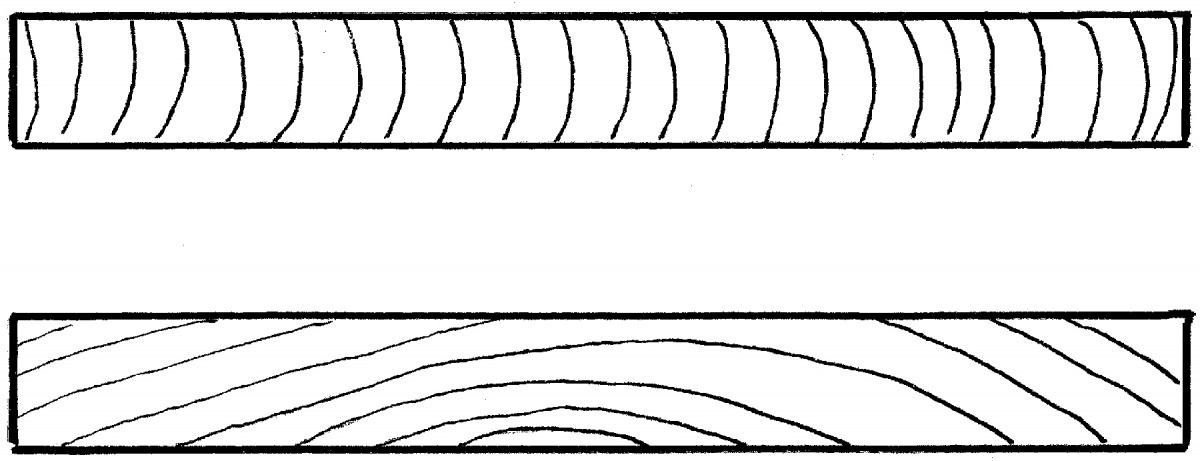
Search for quartersawn. Finding the best figure involves a bit of Voodoo, but the boldest patterns typically come from the boards with quartersawn grain.
I keep my eye out for boards that are quartersawn or close to quartersawn. Even within a plain- or flat-sawn log, the slabs near the pith will come out with a more quartered grain orientation. This is where you’ll likely find the most dramatic and consistent figure. A plain-sawn board can often have dramatic figure, but the board is more likely to have sections where the curl disappears. In a perfect world, all the boards used in your project should be from the same tree. Yet because figured maple can be so busy, it can often hide differences that might stick out on milder-grained wood.
It’s all About Luminescence
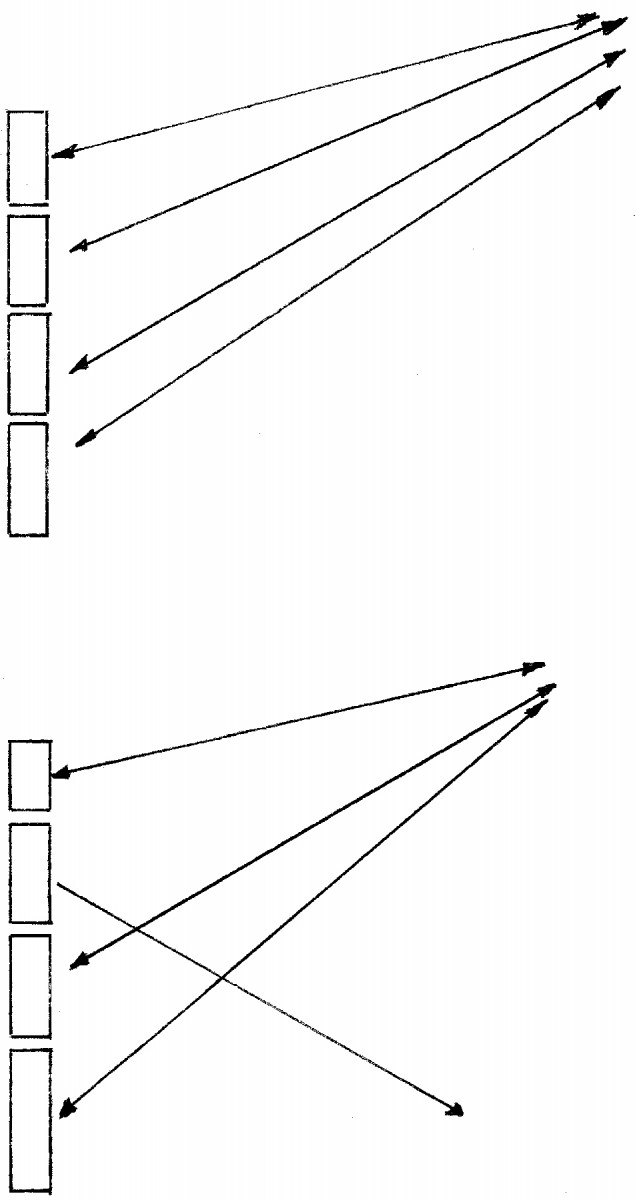
Even glow. Flip each drawer front in a bank of drawers so they all glow with the same intensity.
There are many ways to transform a rough board into a finished piece, with hand tools or machines. The goal is to achieve a smooth, polished surface where the wood glistens. Figured maple can have an almost magical quality because the undulating grain shimmers with life and movement. I can achieve a glass-smooth surface with a well-tuned handplane, but regardless of whether you achieve that final surface with a blade or with many successive grits of sandpaper, the result will be a landscape that reflects light back to your eye with contrasting bands of dark and light.
One thing that’s so captivating about figured maple is that the reflections dance as you look at the board from different angles and they can vary in intensity. This should be a clue that can help get the most dramatic pop.
I orient drawer fronts to maximize this effect before sawing any joinery. Wet each smooth drawer face with mineral spirits and hold each front just as you’d normally view it. Flip it end for end and determine which orientation has more luminosity, more pop.
Note that on a tall case piece such as a chest on chest, drawer fronts normally below your eye level will be oriented one way and then flipped end for end to achieve the shimmer for drawers positioned above your eye.
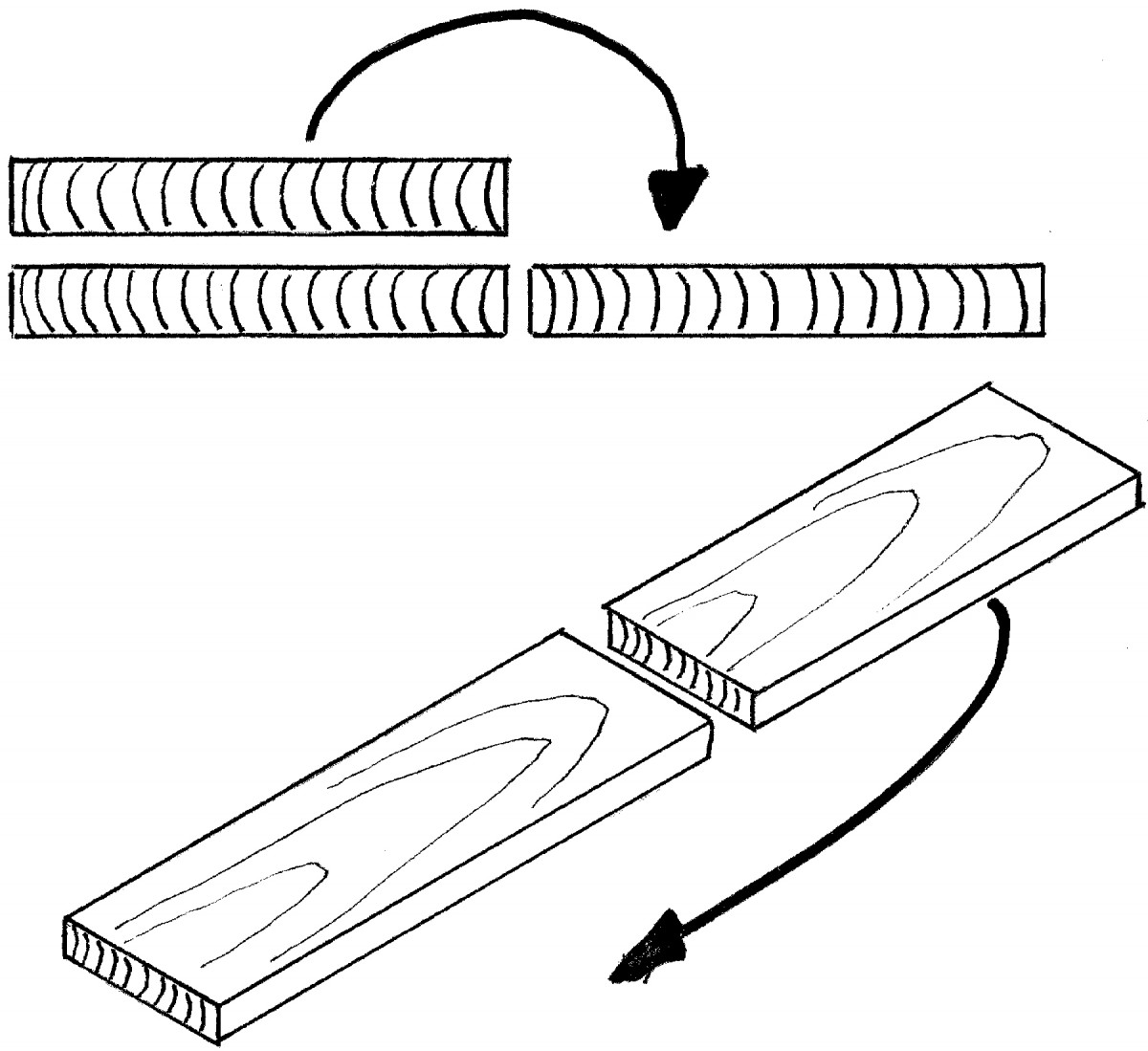
Bookmatch (top) and Slip-Match (bottom). Slip-matched boards will orient the luminosity in the same direction, hiding the glue line.
Warning: this varying luminosity can also work against you. Bookmatched panels create a pleasing mirror image, but can have the effect of having one side shimmer and the opposite die. You might have noticed this with bookmatched panels of other fine-grained woods such as walnut, but it’s especially prominent with the reflective nature of figured maple.
Really important: If you want to hide a glue line on a wide panel, use a slip match vs. a bookmatch. A slip match ensures that the difference in luminosity doesn’t highlight the joint line. If oriented with luminosity in mind, the wild grain will often obscure the joint in a glued-up panel, making it disappear. A slip-matched panel also reduces the chance of tear-out because all the grain runs the same way. Even though figured maple is always tricky to handplane, you’ll find it cuts more sweetly from one direction.
This knowledge about capturing that shimmer may also lead you in the opposite direction. Purposely altering grain orientation can delight with reflective patterns that blink on and off with the slightest eye movement.
Too Much Figure
One final tip to get the most pop from those beautifully figured raised panels in a cabinet door frame: Just as too much carving can actually detract from a composition, give the eyes a rest and choose mild, straight-grained stock to frame your panels. That mild grain also acts as a foil to emphasize the dramatic panel. Less equals more.
Regardless of how you may choose to exploit its secrets, you are joining an army of artisans that have appreciated the dramatic possibilities in curly maple for centuries. If you see some nice figured boards in that barn loft, be sure and buy them…before I do.
Here are some supplies and tools we find essential in our everyday work around the shop. We may receive a commission from sales referred by our links; however, we have carefully selected these products for their usefulness and quality.








